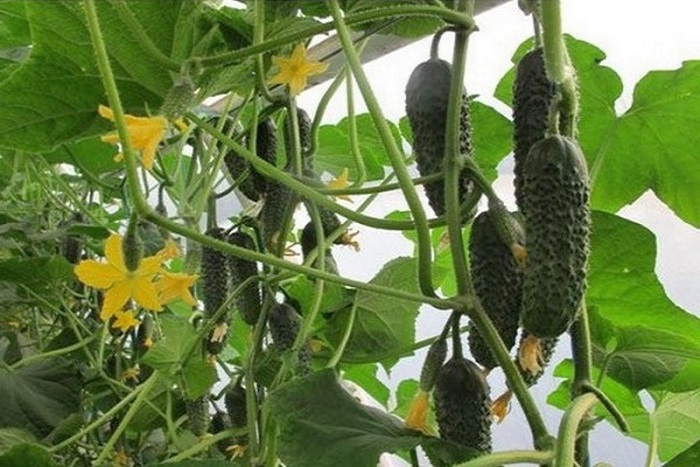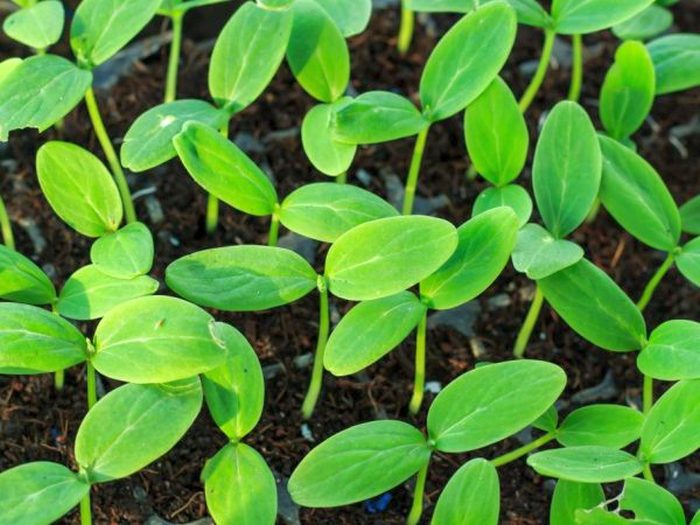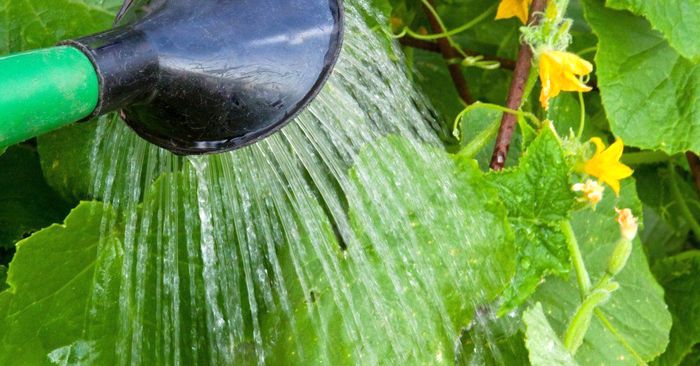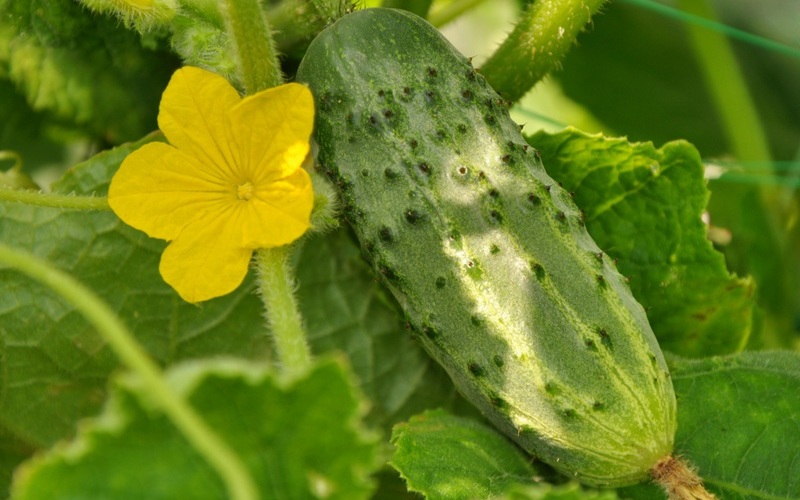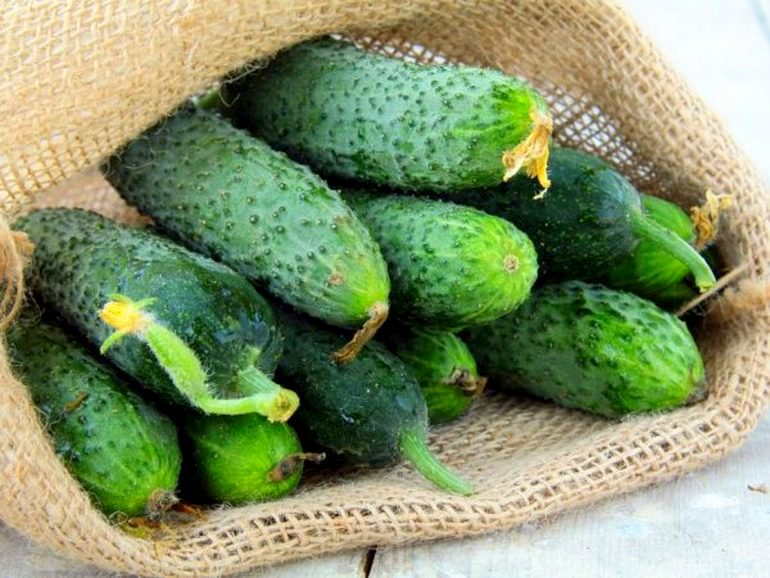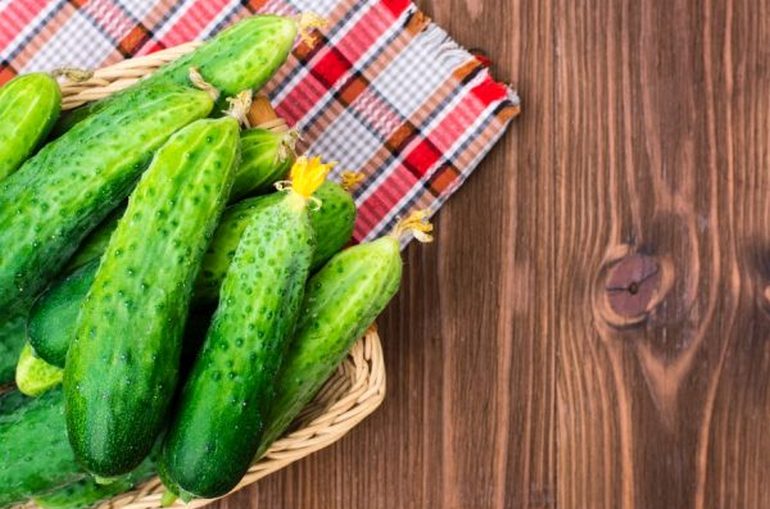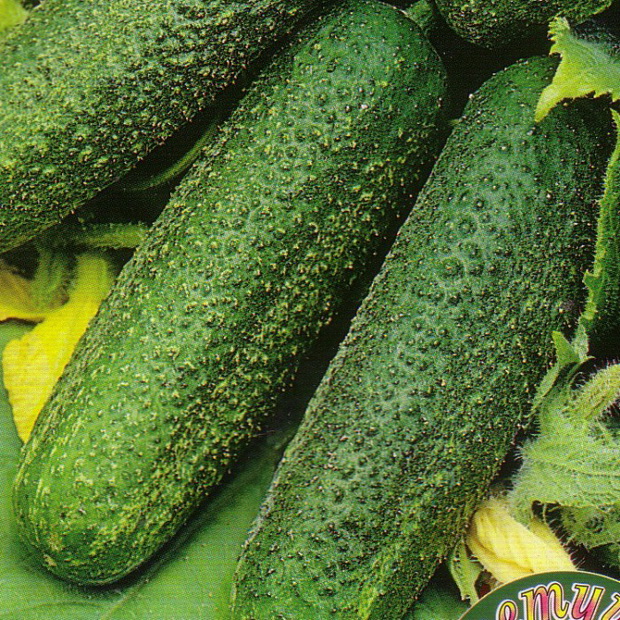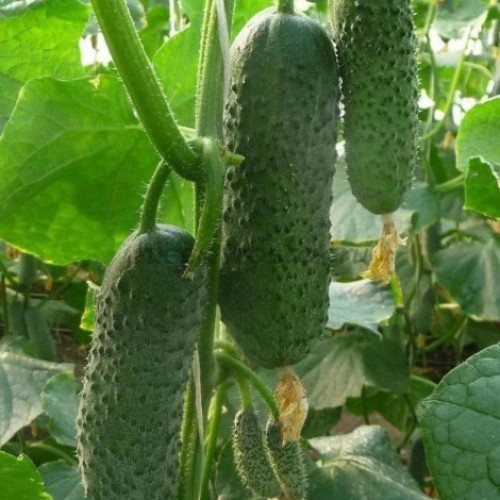Recently, gardeners are increasingly growing hybrid varieties of cucumbers in their beds. Such vegetable plants attract a large number of positive qualities: in terms of ripening, resistance to diseases, the vagaries of the weather, productivity and some other criteria.
Content:
One of these hybrid gherkin varieties is the Trilogi cucumber - an indeterminate type of vegetable that can be grown in the garden beds.
The history of the creation of the variety
Trilogy cucumbers are f1 hybrid, the seeds of which are produced by Rijk Zwaan from the Netherlands. In the State Register of our country, these cucumbers were registered about 7 years ago. The variety is recommended for cultivation in the Central and North-West regions of Rosmiya, including in the Moscow region and in the Leningrad region.
Description and main characteristics of the variety
The description of this hybrid should begin with a story about Trilogy cucumbers in general. The variety belongs to the early in terms of ripening - from the moment of planting to the collection of the first ripe fruits, it takes about 2 months. This indeterminate variety can grow up to 1.4-1.6 m (and longer) in height. Because of their length, these cucumbers require tying. Usually, for this, trellises are used, to which, after 40-50 cm, rows of wire are tied, to which the main and side shoots will be attached.
Pinching of the top of the main and lateral shoots is performed in order to activate the emergence of new ovaries, as well as to stop the growth of the central stem. By pinching off the top of the main shoot, it is possible to activate the growth of lateral stems, on which new ovaries will appear.
Shoots branch weakly. But they develop well ovaries - up to 4 ovaries can appear in each leaf axil. This hybrid is self-pollinating - only female flowers appear on the lashes.
The main crop on the bushes of the Trilogi hybrid is formed on the main stem. And before the central stem reaches the main trellis, all emerging lateral shoots should be removed on it, but the ovaries should not be touched. At a height of 0.5 meters on the central stem, both shoots and ovaries are removed. When the central stem grows to the level of the trellis, it is twisted around it, and after 1 m, the top is removed from the stem, leaving up to 3 lateral stems in this gap, which appear in the nodes. These lateral shoots are also pinched at the level of 4 leaves. The bush regulates the appearance of ovaries on lateral shoots by itself.
Ripe fruits have the shape of a cylinder, the skin is of medium density, with small tubercles, the color is dark emerald, with small longitudinal stripes of a light tone. The length of one gherkin is up to 10 cm, the ratio of length to radius is 6: 1. The pubescence is medium, the thorns are small, white. Fruit weight - about 70 g. The yield of the variety is high, up to 6-7 kg per 1 m2. Since this variety is hybrid, it is impossible to collect seeds from these cucumbers.
The skin of the gherkins is of medium thickness, the pulp is tender, crispy and juicy. The aroma of the fruit is typically cucumber.
Note! The harvested crop can be transported over long distances, during the transportation the presentation and taste of the fruits do not change, and this is their undoubted advantage.
In the first month of fruiting, the main part of the crop is harvested from the Trilogy hybrid, and then separate ovaries appear on the lateral shoots.
This hybrid belongs to the universal - its fruits can be consumed fresh, salted, preserved.
The characterization of this cucumber would be incomplete without a story about its resistance to diseases and changes in weather conditions. Trilogy cucumbers are highly resistant to brown spot, cucumber mosaic virus, powdery mildew. But it is often affected by peronosporosis. It perfectly tolerates changes in weather conditions, since its stress resistance is above average.
Agrotechnics of planting and cultivation
The cultivation of these cucumbers does not differ much from the cultivation of other varieties of this vegetable crop. But still, there are some nuances of planting and caring for this hybrid variety.
Before planting seeds in an open pile (or Trilogy seedlings), the gardener must choose the right site for planting. The land in the beds should be loose, fertile and well lit by the sun. In the shade, such a hybrid will grow and form ovaries much worse.
The depth of planting seeds in open ground is carried out to a depth of 6-8 cm, and the soil should be completely warmed up to 15-16? С.
Important! Parthenocarpic cucumber varieties should not be grown next to vegetables pollinated by bees!
When growing seedlings of this vegetable, it must be remembered that it is very delicate and hardly acclimatized after transplantation (especially if the roots were damaged during transplantation), therefore, such seedlings should not be subjected to a diving procedure, but immediately plant the seeds in separate peat cups.
The main care of the sprouts consists in regular watering as the top layer of the soil dries up and feeding. One is carried out after the appearance of the first true leaf (in this case, nitrogen fertilizers are used), and the second time the seedlings are fertilized two weeks before transplanting into open ground or 10-14 days after their acclimatization in the beds.
Seedlings should be planted on beds (or planted with seeds in open ground) at a distance of 0.5 m from each other. The distance between the beds should be at least 0.7 m.
Basic rules for caring for the bushes of this hybrid:
- timely watering;
- loosening the soil;
- weed removal;
- application of dressings, especially in the first month of fruit ripening.
Seedlings especially do not require a lot of moisture during the growth of the lashes. And only after the active appearance of ovaries, it is necessary to increase the amount of introduced moisture - the daily rate is divided by half and watered in parts in the morning and evening hours. Water for irrigation should not be cold, otherwise such moisture can provoke the development of root rot of cucumbers. Therefore, the water is left in the sun to heat up.
For cucumbers, the root system is not strong enough, therefore, they should be fed only with liquid dressings, in which all fertilizers are well dissolved.
During the season, Trilogy cucumbers are fed no more than 5-6 times.
Important! It is necessary to alternate the introduction of organic and mineral dressings for this hybrid variety in order to prevent an excess of the same nutrients in the soil.
Advantages and disadvantages of the variety
The main advantages of this variety:
- this hybrid belongs to the early ripening varieties - from the moment the sprouts appear to the collection of the first ripe fruits, it takes about 2 months;
- Trilogy cucumbers are self-pollinated;
- the yield of the variety is high;
- fruits ripen almost simultaneously;
- ripe fruits have an excellent presentation and good taste;
- Trilogi cucumbers tolerate transportation well over long distances;
- the harvested crop can be stored for a week and a half without losing its presentation and taste;
- cucumbers are versatile due to their gherkin size. Therefore, they are used fresh, as well as for conservation;
- the hybrid is highly resistant to most diseases, as well as high stress resistance.
Cucumbers Trilogi practically have no drawbacks. But long lashes require obligatory tying, and the bushes themselves should be formed in the process of their growth.

